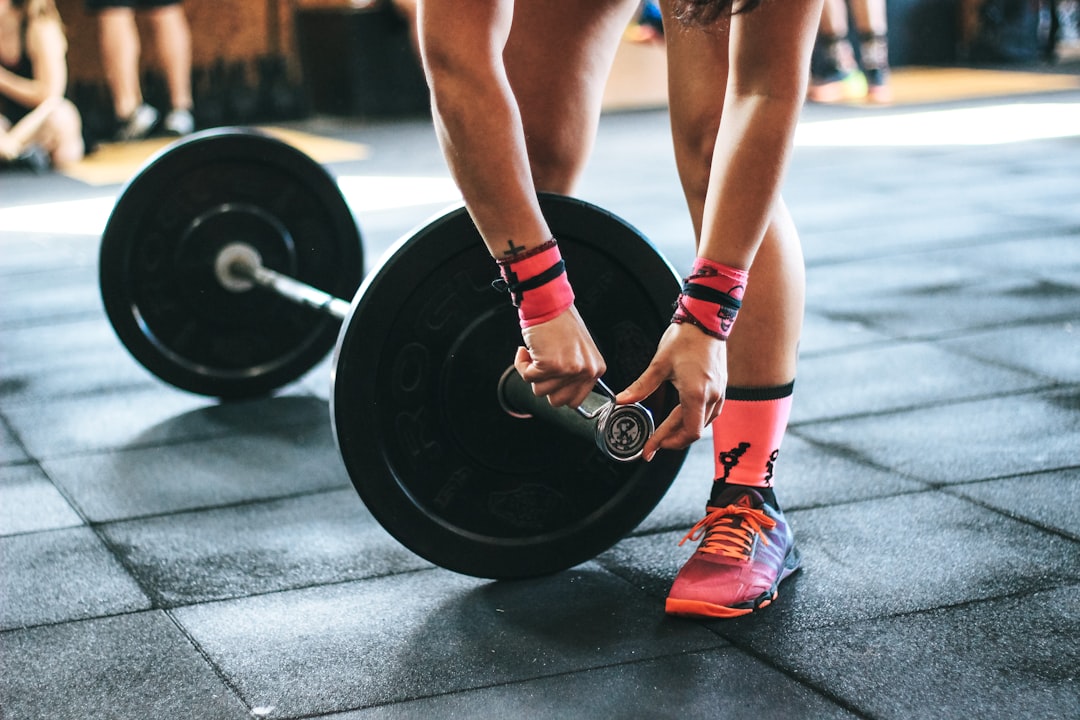Science has been an integral part of professional sports since the early 20th century. Through the use of advanced technology and modern scientific principles, professional athletes are able to gain an edge over their competitors. From anaerobic and aerobic conditioning to nutrition and biomechanics, science has dramatically changed the way athletes train and perform.
In recent years, the use of science in professional sports has become even more prevalent. Teams employ experts in sports science to gain a competitive edge, and professional athletes are using scientific methods to improve their performance. From developing new training techniques to utilizing the latest technology, science is playing an increasingly important role in professional sports.
The impact of science on performance in professional sports has been significant. Athletes are able to use technological advancements and scientific principles to improve their physical and mental abilities, resulting in higher levels of performance. As a result, professional sports teams have become more competitive and the competition for championships has become even more intense. The use of science in professional sports has also resulted in fewer injuries and longer careers for athletes, as well as an increased interest in the sport from fans.
The Importance of Data and Analytics
Data and analytics play a crucial role in sports training. By collecting and analyzing data from athletes, coaches and trainers can gain insight into their performance, physical and mental health, and overall fitness. This data can then be used to develop personalized training plans that target specific areas of weakness and maximize performance potential. Data and analytics can also be used to monitor athletes’ progress, identify potential areas of improvement, and provide feedback to athletes in real-time.
1: Improved Decision Making: Data and analytics help organizations make better decisions by providing insights into customer behavior, market trends, and competitive strategies.
2: Increased Revenue Generation: Data and analytics can be used to identify new opportunities for increased revenue generation, as well as to optimize existing processes and operations.
3: Increased Efficiency: Data and analytics can be used to streamline processes and operations, resulting in improved efficiency and productivity.
4: Improved Customer Experience: Data and analytics can be used to better understand customer needs and preferences, enabling organizations to deliver a better customer experience.
5: Enhanced Risk Management: Data and analytics can help organizations identify potential risks before they become a problem, enabling them to take proactive steps to mitigate any potential issues.
Data is also used to improve performance and reduce injury risk in professional sports. Data collected from athletes can be used to track performance metrics, such as speed, power, and agility. This data can then be used to create personalized training programs to help athletes reach their peak performance levels. Data can also be used to identify risk factors that could lead to injury, allowing coaches and trainers to take steps to prevent injuries before they occur.
Finally, the use of data and analytics in professional sports requires the use of a variety of tools and technologies. Wearable sensors allow for the collection of real-time data, while motion capture systems and biomechanical analysis can provide detailed information on an athlete’s movements. Machine learning algorithms can be used to analyze data to identify patterns and trends, while predictive analytics can be used to forecast future performance. All of these tools and technologies are integral to the use of data and analytics in professional sports.
The role of data and analytics in sports training
The role of data and analytics in professional sports training is becoming increasingly important as athletes strive to achieve peak performance. Teams are using data to track performance, analyze opponents, and develop tailored training plans to help players reach their goals. By collecting data on the physical and mental demands of sports, trainers can better understand how to optimize athletes’ performance. Additionally, teams are now using analytics to monitor an athlete’s sleep and nutrition, as well as to identify potential injury risks. Through the use of data and analytics, professional sports teams are looking to give their athletes an edge in the competition.
How data is used to improve performance and reduce injury
In recent years, data analysis has become an increasingly important part of training and performance optimization in professional sports. By using data to identify potential risk factors for injury and areas for improvement, teams are able to develop tailored training plans for their athletes. This helps them to maximize performance while minimizing the risk of injury. Furthermore, data can be used to gain insights into trends in performance, allowing teams to adjust their training plans accordingly. As a result, professional sports teams are now able to use data to continually refine and optimize their training techniques.
Tools and technologies used in data collection and analysis
As the world of professional sports continues to evolve, the use of tools and technologies for data collection and analysis is becoming increasingly important. Teams are using sophisticated tracking systems to monitor player performance, as well as advanced analytics to analyze game strategies. These tools allow coaches and managers to have an in-depth understanding of their players and teams, enabling them to make informed decisions and improve their training techniques. As a result, professional sports teams are now more equipped than ever before to take their training methods to the next level.
Training for Endurance and Strength
Training for endurance and strength has become increasingly important for professional athletes. To gain an edge against their opponents, athletes are turning to more innovative practices to improve their physical performance. High-intensity interval training (HIIT) and circuit training are becoming increasingly popular methods to increase an athlete’s aerobic capacity and muscular endurance. Additionally, athletes are incorporating strength-training exercises such as Olympic lifts and powerlifting into their routines to improve their power and strength. By combining these types of training techniques, professional athletes can build a solid foundation of both endurance and strength to help them excel in their respective sports.
The importance of endurance and strength training
Endurance and strength training are two of the most important components of any professional athlete’s training program. Training techniques have evolved over time, with many athletes now incorporating cross-training and weightlifting into their regular routines in order to stay at peak performance. Studies have shown that athletes who focus on these two aspects will have a higher chance of success in their chosen sport, as they will have improved endurance, increased strength, and better overall conditioning. The importance of endurance and strength training cannot be overstated, and is something that all professional athletes should incorporate into their training regimen.
The evolution of endurance and strength training techniques
In recent years, sports teams have embraced a variety of innovative techniques to enhance the endurance and strength of their athletes. These techniques are often tailored to a specific sport, taking into account the physical requirements of the game and the individual needs of each athlete. Endurance and strength training has become increasingly popular for professional sports teams, as they strive to give their athletes the edge that can make a difference between winning and losing. Many teams are now using specialized equipment, such as heart rate monitors, to track the progress of their athletes and help them reach peak performance levels. Moreover, coaches are incorporating new strategies into their routines to ensure that their athletes are always at their best. This evolution in training methods has had a positive impact on professional sports, proving that investing in athletic development pays off for both players and teams.
The latest training methods and technologies in these areas
Professional sports have seen major advancements in training techniques and technologies in recent years, with teams and athletes increasingly focusing on sports science to maximize performance. From sophisticated data analysis and tracking systems, to the use of virtual reality for training drills, these techniques are being used to fine-tune athletes’ abilities and help them reach their peak performance. With teams investing heavily in research, development, and training staff, the latest methods are expected to continue to revolutionize the way professional athletes are trained.
Mental Training and Performance Enhancement
In a world of ever-changing sports training techniques, the importance of mental training and performance enhancement is becoming increasingly recognized. Professional athletes are realizing that psychological preparation is just as important as physical training and are incorporating mental exercises into their daily training regimens. Mental training can be used for visualizing success, focusing on the task at hand, and controlling emotions. Performance enhancement, on the other hand, focuses on developing an athlete’s physical capabilities to the highest potential. Mental and physical training are both key components of evolving sports training techniques and are essential for continued success in professional sports.
The role of mental preparation in sports performance
Mental preparation has become a key factor in the performance of professional athletes, with teams increasingly focusing on the psychological aspects of training. Mindful techniques such as visualisation, positive self-talk and goal setting are being adopted by sports teams as a way to improve player performance. Studies have found that athletes who take the time to practice mental preparation techniques are better equipped to handle pressure, maintain focus and stay motivated throughout the season. Mental preparation is now an integral part of any training program, and can help athletes reach their full potential.
The latest advancements in mental training techniques
Mental training techniques have become increasingly important for athletes in professional sports as the competition continues to be more and more intense. With the latest advancements in mental training, athletes are now able to use various tools and strategies to better manage their emotions and prepare themselves for big games. Professional athletes are now trained to recognize the signs of anxiety and stress during competition, and they have developed techniques to help them stay focused and positive. These techniques include visualization techniques, goal setting, mindful meditation, cognitive behavioral therapy, and a variety of other strategies that can help athletes stay in peak performance conditions. Mental training has become a key factor in the success of professional athletes, and it is likely that these advancements will continue to benefit them in the future as well.
The impact of mental training on performance and injury prevention
Mental training, such as visualization and meditation practices, is becoming increasingly important for professional athletes. In addition to the physical aspect of their performance, athletes are now recognizing the importance of their mental state when it comes to peak performance and injury prevention. Mental training techniques can help athletes stay focused and motivated during intense matches and workouts, reduce stress and anxiety, and increase their confidence. By improving their mental health and wellbeing, athletes are able to perform at higher levels while also reducing the risk of physical injuries. Mental training is becoming an essential part of any professional athlete’s training regimen, with many teams now employing dedicated mental health professionals to help their athletes achieve peak performance.
Innovations in Recovery and Rehabilitation
In the world of professional sports, recovery and rehabilitation techniques are evolving rapidly. With a focus on quick, efficient recovery and prevention of further injury, teams are increasingly turning to innovative tactics such as cryotherapy, infrared light therapy and active recovery training. By using these techniques in combination with traditional forms of physical therapy, teams are able to maximize the effectiveness of their athletes’ recovery process and promote long-term health.
The importance of recovery and rehabilitation in sports training
In the ever-evolving landscape of professional sports, an increasingly important aspect of training is the focus on recovery and rehabilitation. As athletes demand more of their bodies, recovery and rehabilitation become essential components of any successful training program. By taking a holistic approach to training, athletes can ensure they are able to perform at a high level while minimizing the risk of injury. Through techniques such as yoga, massage therapy, and active recovery, athletes are able to maximize their physical performance and maintain peak physical condition. Recovery and rehabilitation play an integral part in helping athletes reach their peak performance and remain injury-free.
The latest innovations in recovery and rehabilitation techniques
In recent years, professional sports teams have become increasingly focused on recovery and rehabilitation techniques, introducing a variety of innovative new methods for their athletes. Recovery and rehabilitation techniques like cryotherapy, massage therapy, and even the use of virtual reality technology provide athletes with the ability to heal and prepare for upcoming games faster than ever before. Teams are also taking advantage of the latest developments in nutrition science to ensure their athletes are performing at peak levels. As teams continue to invest in recovery and rehabilitation, athletes can expect to see even more advancements in this area in the future.
The impact of recovery and rehabilitation on performance and longevity
As the demands of professional sports continue to increase, recovery and rehabilitation techniques have become integral components of training regimens. These techniques are designed to reduce the risk of injury, speed up recovery times, and ultimately improve performance and longevity. In recent years, athletes have increasingly turned to recovery methods such as massage therapy, cryotherapy, and active release therapy in order to stay at the top of their game. It is clear that these recovery and rehabilitation techniques are having a positive impact on athletes’ performance and longevity in professional sports.
The Future of Sports Training
Sports training is rapidly evolving as technology and research continues to provide coaches and athletes with new insights into the best ways to prepare for competition. With the development of wearable technology, coaches are now able to monitor athletes’ performance in greater detail than ever before, and this data can be used to develop individualized training programs that maximize an athlete’s potential. Additionally, sports scientists are developing new physiological tests to help better combine strength and conditioning with sport-specific skills. As a result, the future of sports training is sure to include more targeted, tailored approaches that can help athletes reach their peak performance level.
The advancements and innovations in sports training yet to come
As the world of professional sports continues to evolve, training techniques have advanced to keep up with the changing times. With the advent of technology and new advancements, sports training is no longer limited to physical conditioning and agility exercises. Today, teams are taking advantage of analytics and data-driven approaches to help athletes achieve their maximum potential. From utilizing virtual reality simulations to tracking biometric data, teams are continuously looking for new ways to improve performance. Through these cutting-edge techniques, advancements in sports training are sure to continue in the years and decades yet to come.
The potential for technology and science to further enhance performance
The use of technology and science to further enhance the performance of athletes has become increasingly important in the world of professional sports. With the help of advanced analytics, athletes are now able to gain insights into their performance that were previously not available. From wearables that measure physical activity to virtual reality simulations that provide an immersive training experience, technology is being used in a variety of ways to give athletes an edge. As technology and science continue to evolve, so too will the training techniques used in professional sports.
The role of science in sports and the potential for continued evolution
The use of science in professional sports is becoming increasingly prevalent as teams and athletes look for ways to gain an edge in their performance. Through the use of technology, nutrition, and biomechanics, training techniques are rapidly evolving to better prepare athletes for physical and mental challenges. Not only do these advancements allow athletes to push the boundaries of what’s possible, but they also provide a deeper understanding into the complexities of human performance. As science continues to be integrated into sports, it is likely that these training techniques will continue to evolve in the years to come.
Conclusion
The use of technology and science has become an integral part of modern sports and has had a huge impact on performance. With the development of wearable technology, analytics, virtual reality simulations, and other advancements, teams and athletes are able to gain insights into their performance that were previously not available. As technology and science continue to evolve, so too will the training techniques used in professional sports, allowing athletes to push the boundaries of what’s possible and reach their peak performance. It is clear that the advancement and innovations in sports training yet to come will be invaluable in helping athletes achieve their goals.





